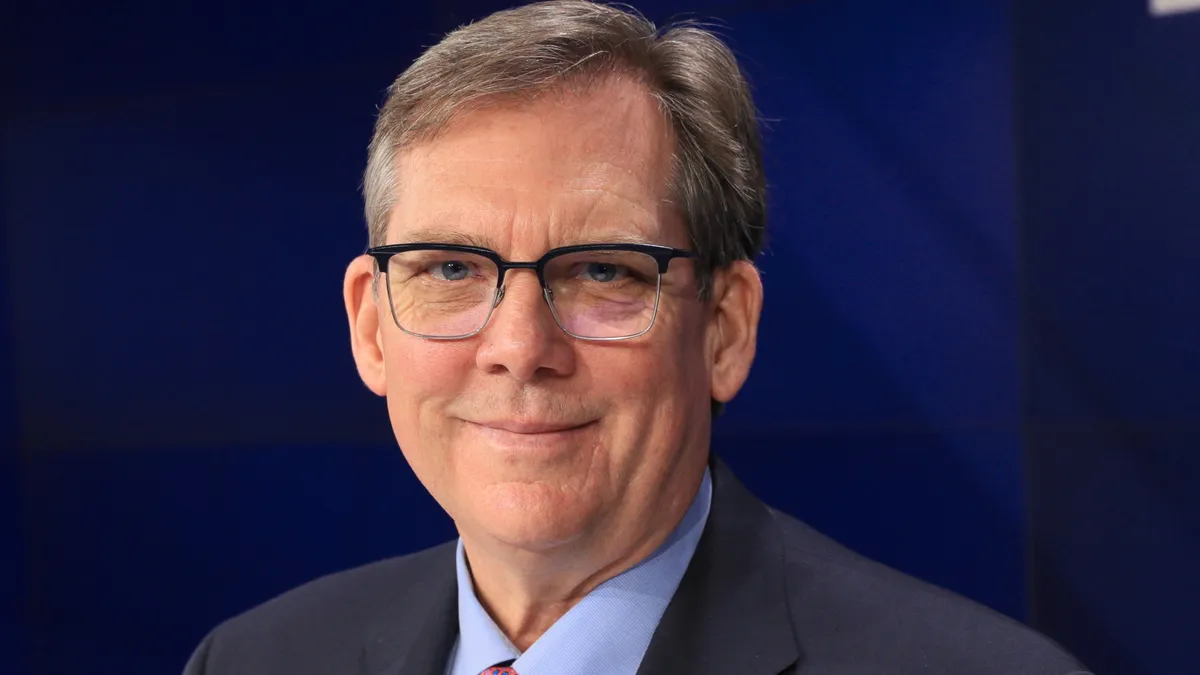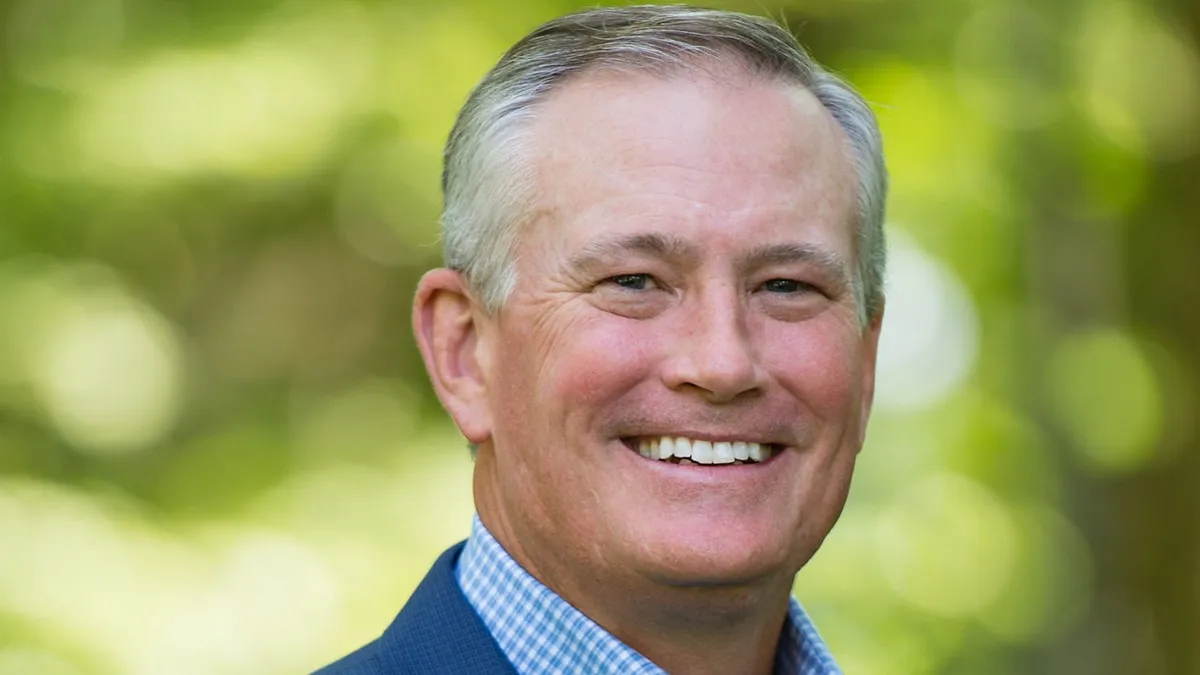After proving fairly resilient throughout the last two years, even as other medtechs were hit by the pandemic, Dexcom may have felt its first pandemic-pressured quarter. Although, the continuous glucose monitor maker still met expectations.
In the fourth quarter, Dexcom expects revenue of approximately $698 million, about 23% growth over the prior year's quarter, according to the company's pre-announcement last week. For the full year, revenue is expected to jump year over year by more than 27% to nearly $2.5 billion.
While the fourth-quarter results were in line with Dexcom's guidance and Wall Street's expectations, the results did not beat the marks by as much as the company has in the past.
CEO Kevin Sayer told MedTech Dive that the combination of the delta and omicron variants slowed new patient additions in the fourth quarter, something that was also felt a bit in the third quarter. Sayer added that due to Dexcom's strategic shift to distributing more devices through pharmacies rather than the durable medical equipment channel, there was also not the bump in sales traditionally seen in the fourth quarter.
"Everybody's used to us beating everything all the time, and we didn't. So, when you don't beat everything all the time, everybody asks the question, 'Is something wrong?'" Sayer said. "Nothing's wrong. That's just the way it was."
Investors may have felt a bit cautious following last week's announcement as Dexcom's stock price fell by nearly 9% over Thursday and Friday and was down over 4% when the market opened Tuesday.
Despite some pressure last quarter, Wall Street has remained bullish on Dexcom as the diabetes technology space continues to take off and the company's launch of the G7 CGM system inches closer.
After expecting a CE mark for the G7 system in 2021, Sayer said that Dexcom is now "very far down the path as far as getting European approval, and we hope to get that relatively soon." Furthermore, the company has officially submitted data for review to the FDA, meaning that a U.S. approval could also come in 2022.
Sayer did caution that while U.S. approval is expected soon, there is still uncertainty around FDA timelines as the agency is prioritizing COVID-19 work. However, Sayer remained confident that the company could still perform well even if a U.S. approval does not come this year.
The CEO spoke to MedTech Dive about other expectations for Dexcom in 2022, including international expansion strategies, further launching the Dexcom ONE product in Europe and how the CGM maker will approach its G7 launch in Europe and, possibly, the U.S.
This interview has been edited for clarity and brevity.
MEDTECH DIVE: Looking ahead to 2022, one thing you said during your J.P. Morgan presentation is that the launch of G7 will be Dexcom's first truly global launch. With the CE mark expected soon and a submission with the FDA, what will the launch of that product look like? Are you planning to roll it out slowly or doing a mad dash to as many markets as possible?
KEVIN SAYER: No, we're not going to do a mad dash everywhere. But we'll do it in our larger geographies and a lot of the geographies where we have a direct presence. For example, Germany will certainly be one of the early launch countries and the UK. Where we have a direct presence, where we control distribution, or where there's a large user base, we will attack those geographies first. Those are two countries that we'll go after, certainly, early on, as well as other larger countries.
After we launch in our larger geographies in Europe, we have a plan for all the other countries too.
The resources then kind of shift to the United States based on approval timing. And as we do capacity planning — as we get enough capacity up and running and enough product and inventory — we can do the U.S. and these larger geographies, and then we'll roll it out from there.
Diabetes tech overall has remained fairly successful during the pandemic. How has the pandemic pressured the company over the second half of 2021, and has there been any impact from the omicron surge?
SAYER: We started to feel it a little more during the second half of last year, with both delta and omicron together. Our number of visits to physician offices has come down. We're still doing extremely well in the long-established intensive diabetes practices, the endocrinologists and diabetologists, who see a lot of people with diabetes who are very used to working with us.
Where we saw some difficulty is getting into newer offices and meeting physicians who don't know much about Dexcom. Getting into offices with people we don't have a relationship with or have never been there before has been very difficult.
We saw a little slow down on new adds. In all fairness, though, there were still a lot of new patients in the fourth quarter and we still had a really good number over the course of that time period.
International expansion has been a big topic for Dexcom and, really, the entire diabetes tech space. With the upcoming European launch of G7 and recent international initiatives, how crucial is the company's international growth and strategy going forward?
SAYER: In 2015, we had three employees outside the United States, three. Since then we have hundreds, and our businesses outside of the U.S. have certainly gone up exponentially. As a percentage, it's probably growing faster than our domestic business.
The flip side of that is we do not have the infrastructure of our large competitors, or even the pharma companies that we work with, over in Europe. When we want to go to Mexico, for example, we start from zero. We have no employees. We have no relationships with the government. We have nobody. So, we have to figure out how best to do that expansion.
Our strategy early on was to go very broadly and use a network of distributors. It worked, and that's how we grew our business. But as we've gone direct in several of these markets, we learned that we can go deeper and we can do more things. For example, on the pricing side, distributors have to make a certain margin. Well, if we control the manufacturing of the product and the distribution of the product, what are we willing to settle for and what kind of access are we willing to open up in those countries?
We've laid out a five-year plan to our investors that has us at over a billion dollars, certainly, by 2025, and I'd love it for it to be sooner. We've got to get into those territories. That's not just a product question for us; it's an infrastructure question as well.
The word international doesn't mean very much — it is country by country. And you've got to have a presence in every one of them. We've been a very domestic company, our revenues are still 75% or more generated in the U.S. We are going through the transition of becoming a more global company. We're looking at the best balance between distributors and going direct. But there are nuances that I've learned in these markets, even in 2021, that I didn't know in the past that we really need to be thoughtful about.
There are some countries where we'll probably never go direct, where we need that distributor to have the relationship with the government, the regulatory authorities, or even the physicians that we could never build on our own.
Dexcom launched Dexcom ONE in four countries initially. Can you talk about where else that product might go? Also, is this a tool to address markets you're not in, or is this something that can be used in markets you're already operating in?
SAYER: It's a tool for both. It is first a tool for markets that we're not in to expand geographically and expand our footprint without having to expand people-wise. In these countries, we've launched it on our e-commerce platform. So, customers are paying cash, and they're buying it on the platform, and we're shipping it directly to them.
While we still provide them with technical support, the fact is that there's not the infrastructure we've had in other countries in the past. It's a good way to get into a specific geography where we don't see a sizable enough population, or we haven't had the time to make the investment.
Step two, we believe in certain markets that there is the opportunity to have a portfolio of products. This definitely becomes a second product for us on the distribution side, allowing us to be competitive for a different segment of the population, those who don't use all the features from the primary CGMs.
It's a big step for us because it's our first venture and our first foray to launching a new product that's really software-based. Dexcom ONE is on the same platform but creates a completely different experience. We're very excited about it. And yes, there are other geographies where we'll launch it in Europe this year, but I can't give you the roadmap yet.
Last question for you is a little general. What are you excited about for Dexcom and the diabetes tech space overall in 2022?
SAYER: We've got significant new product launches coming out in 2022, and then those products will become more mature and have more features in 2023. I said many years ago that 80% of people on intensive insulin therapy will be using a CGM. That'll be a worldwide thing, it won't just be a U.S. thing. It's going to happen. I think this growth is global, particularly as we look at different products with different software, so we can come with different price points.
As I look forward, I see Type 2 diabetes on the horizon. The Type 2 market maybe will not be huge revenues next year, but it will start to get bigger in 2023. And then I look at all this data that we're generating. I would love to figure out all we can figure out with this data. I think there is such an opportunity to develop models of care and find consistency in people's behavior.

















